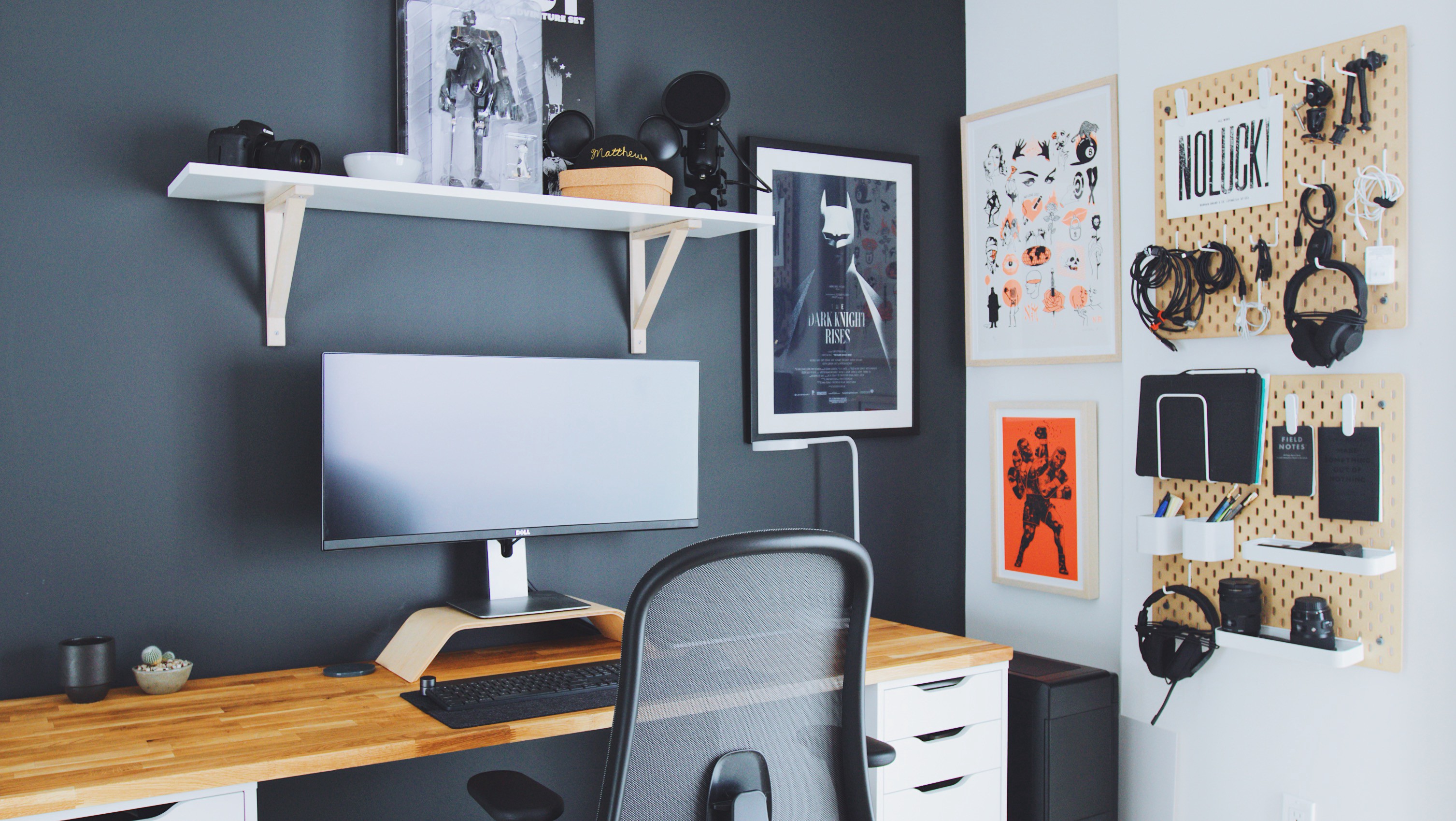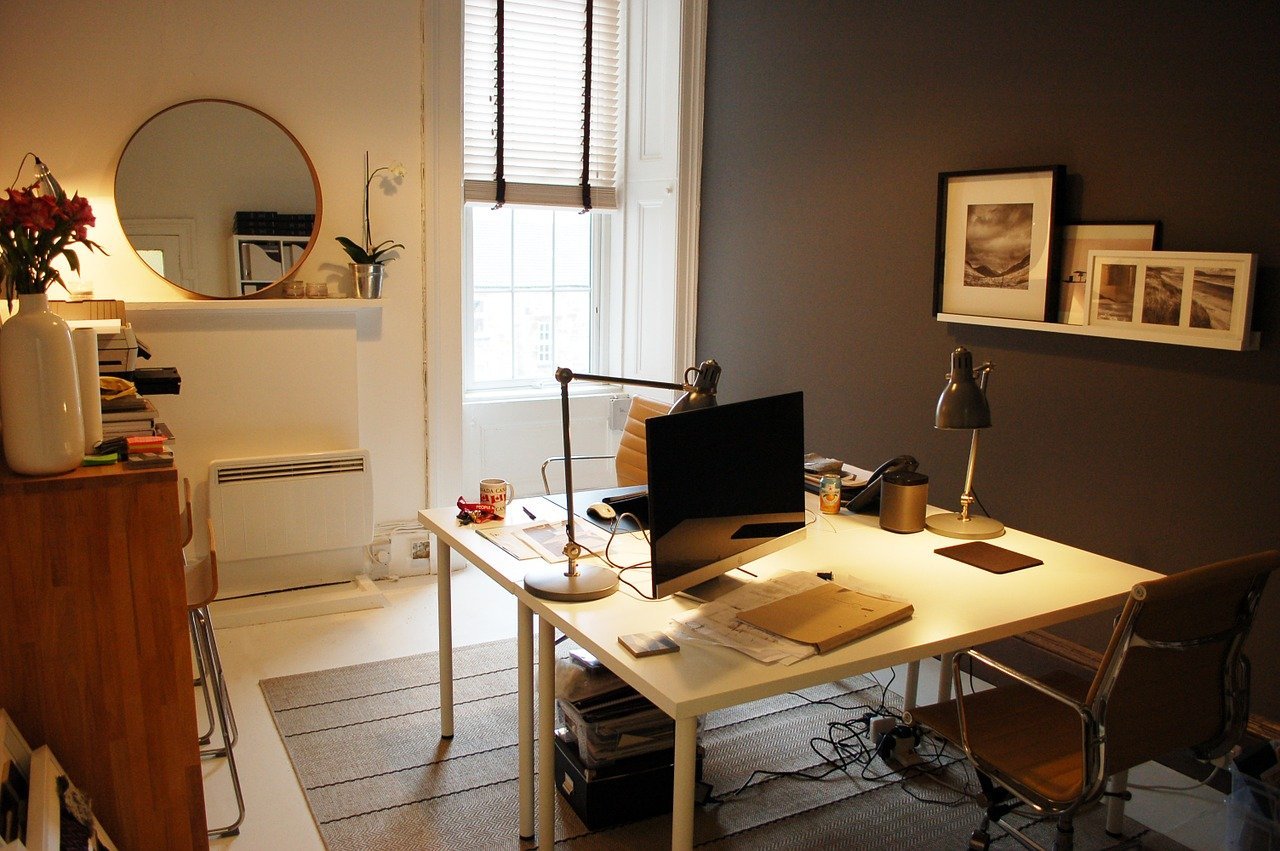Great things often come in small packages and that can go for a small office space too. It isn’t really about the space you have as much as it is about the way you put all of the components in it together.
If you organize your small office well, it can be efficient. This requires proper planning. For instance, avoid as much paperwork as possible, and instead opt for digital files. Also, include enough lighting and use versatile furniture.
Ensure your office space has enough windows and constantly declutter and recycle old and unused things. Want to learn how you can effectively make the most of a small office space? Keep reading.

Table of Contents
Have Enough Lighting
Proper lighting works like magic when you need to make a place look bigger. Ensure you use overhead lamps that will light the whole area. Avoid floor lamps that create shadows of most things in your space.
This can make the office look much smaller. Also, as you are looking for a space, settle for one with big windows. These will allow in more lighting and also fresh air. A small space without windows will feel more suffocating and unpleasant to work in.
Adopt Digital Working
Paperwork is one of the things that consume lots of office space. You have probably seen lots of shelves in offices full of redundant paper files. Imagine how much space you would save if you opted to work digitally.
Ensure you get different digital programs to save your documents and files and you will create more space to work with. Also, make it a habit to get rid of old and useless paperwork instead of piling it up.
Moreover, digital working gives you more freedom to work anywhere at any time.
Declutter
Some people are hoarders. Even in a small office space, they will want to hoard as much stuff as possible. But this will ‘’eat up’’ more of your space which you would have used for more productive work.
Make it a habit to dispose of old and unused stuff. Also, recycle some and donate others that are in good shape but you don’t need and see how much free space you create.
Taller Book Shelves and Cabins
Opt for taller shelves as opposed to wider ones. Bookshelves and cabinets should be lean and tall so they leave you more space for other furniture.
Such furniture also gives you more space to work with since they create more room. If your ceilings are high, then get as high shelves and cabinets as possible so you have more room to work with.

Flooring
Use wall-to-wall carpet as opposed to rugs that make a room appear small. Wall-to-wall flooring allows for the continuation of a room hence making it appear bigger while rugs create ‘’portions’’ in a room.
Also, opt for neutral or simple colors instead of bright colors. Neutral colors are more toned down while bright colors scream which can be overwhelming sometimes. Already you are working with a small space, so you want a more neutral look.
Involve Natural Plants
There is a life that natural plants create in a room. Put potted plants on your tall bookshelf or windowsills for a fresh touch.
This will put your attention away from the busy cubicles or space. Create that sense of nature in your working space and you won’t notice how small or uncomfortable it may be.
Use Smaller Desks
If you adopted technology and most of the work is digital, why do you need a large working desk? Moreover, it consumes more space than is needed.
Choose a small desk to accommodate a computer and maybe a few other things like a notebook and pens. It should have drawers so you can keep things on the desk instead of on the desk.
This will create more working space and keep you organized.
Final Remarks
All hope is not lost with a small office. If you adopt the above ideas, you can be as productive in a small space as in a big one.
Make it a habit to declutter your office as this can go a long way in ensuring you have a serene environment to work on. The mood of your office is just as important as the size of the space.
